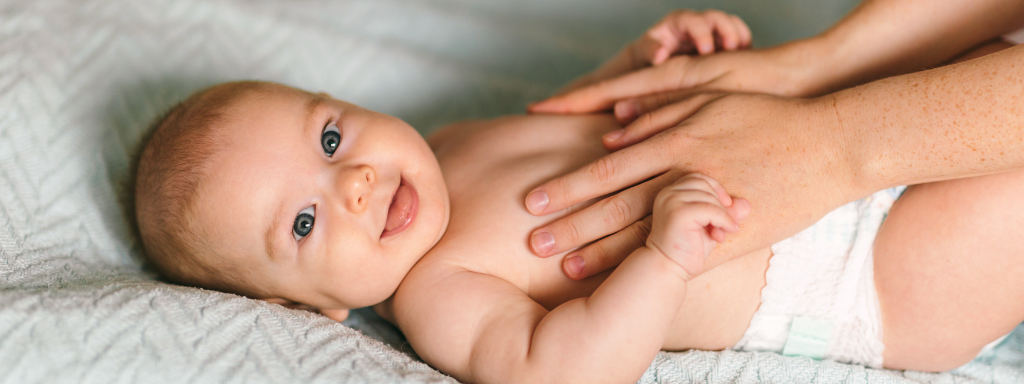What is baby and child massage?
Infant massage combines various manual techniques, including Swedish massage and reflexology. Through gentle manoeuvres (e.g. mobilisation, effleurage), it aims to soothe or stimulate the baby or child. If necessary, it can also help to relieve certain discomforts such as pain or colic.
A few words about touch in newborns
Touch is one of the first senses to develop in a baby. As soon as he is born, he is picked up, rocked and caressed. In short, we establish physical contact with them. And there is nothing trivial about this action.
Studies have shown that physical contact, particularly that offered by the mother or father, helps to reassure and soothe the baby by reducing the level of stress hormones. Touch also helps babies grow, develop and strengthen their bond with their parents.
What are the benefits of massage for babies and children?
Pediatric massage therapy has been the subject of much research in recent years. Here are some of the benefits associated with the approach, depending on the age group [1].
In premature babies
- Decreased pain associated with medical procedures (e.g., use of needles)
- Faster and greater weight gain
- Improved pain tolerance
- Reduced length of hospital stay
In full term babies
- Reduced irritability
- Improved sleep quality (longer sleep periods, fewer awakenings)
- Relief of colic
- Decreased bilirubin levels (associated with jaundice, which is relatively common in babies)
In children
- Increased concentration, especially in those with attention deficit disorder with or without hyperactivity
- Improvement in certain gastrointestinal disorders (e.g., diarrhea, constipation)
- Pain relief, especially for children living with chronic pain
- Reduced stress and anxiety
- Improved self-esteem
Contraindications
Massage in babies and children should be avoided in the following situations
- Fever
- Active infection
- Skin lesions
- Recent surgery
Massage should also be postponed if the baby has just eaten or is agitated or irritable.
It should be noted that the massage therapist always collects information from the parents before beginning the treatment. The information obtained will be used, among other things, to identify contraindications to the massage and to better adapt the intervention.
Course of the session
The massage for babies and children takes place on a massage table, directly on the skin. The use of an odourless and hypoallergenic oil is common. Since the baby is undressed during the session, the room temperature should be warm enough (around 24-25°C).
The massage therapist will start the session by gathering information from the parent. For example, they will be asked about the course of the birth and the medical interventions the child has undergone since birth. The massage therapist will also take an interest in the family’s daily life, as well as the child’s behaviour and general condition.
Afterwards, the child will be placed on the massage table. The parent will be invited to attend the session. The massage therapist will teach the parent some simple gestures to reproduce at home.
During the treatment, the massage therapist will fully adapt to the baby or child. The therapist will follow the baby’s movements and vary the positions accordingly. The pressure of the massage therapist, his rhythm, as well as the choice of manoeuvres and areas worked on will depend largely on the child’s openness to touch. The head, feet, legs and abdomen can be massaged.
The duration of a massage for a child varies. For example, if the baby shows signs of fatigue or over-stimulation, or if he or she starts to cry, the treatment will stop. However, massage can be continued if the crying is associated with colic, as massage may be beneficial in this case
[1] Field, T. (2019). Pediatric massage therapy research: A narrative review. Children, 6(6):78


